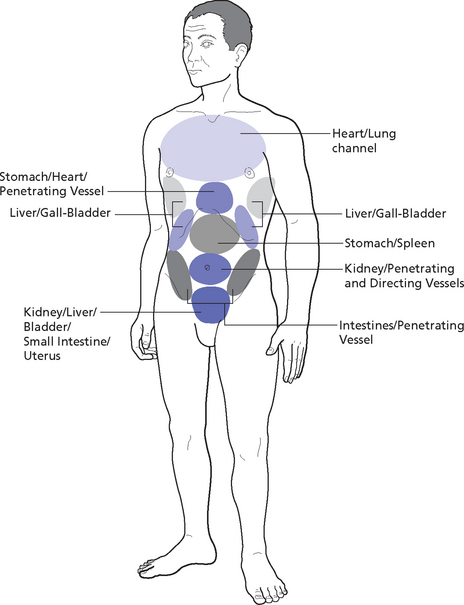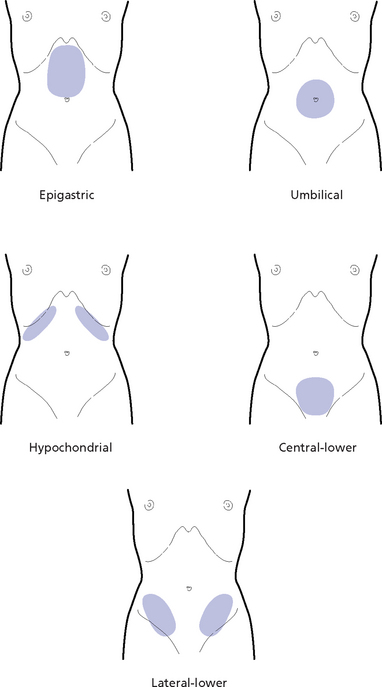Chapter 51 There are three different palpation techniques: This consists simply in touching the skin of the patient lightly. This is done to detect the temperature and moisture of the skin and to check whether the patient is sweating. Detecting whether the patient is sweating is important in exterior invasions of Wind to differentiate between an Attack of Wind and an Attack of Cold within the Greater-Yang pattern of invasion of Wind-Cold. The temperature of the skin of the forehead is also important in exterior invasions of Wind because it reflects the intensity of the ‘fever’ (or heat emission as defined in Chapter 43). Palpation of the chest and abdomen is an important part of diagnosing by palpation because it reveals the state of the Internal Organs. Chapter 35 of the ‘Spiritual Axis’ says: ‘The internal organs reside inside the chest and abdominal cavity like precious objects in a chest, each with its own specific location.’1 The ‘Simple Questions’ in Chapter 22 says: ‘When the Heart is diseased there is pain in the centre of the chest and hypochondrial fullness and pain … When the Kidneys are diseased there is swelling of the abdomen.’2 The chest and abdominal areas influenced by the various Internal Organs are illustrated in Figure 51.1. When palpating the abdomen one should first of all feel the temperature of different areas: if the abdomen feels cold on palpation this indicates either Cold or Yang deficiency; if it feels hot on palpation this indicates Heat. If the pulse picture indicates Heat but the abdomen is not hot on palpation, this indicates exter-nal Heat. In children, a hot sensation of the abdomen on palpation often indicates retention of food. When palpating the abdomen one should feel for lumps. Lumps that come and go and are associated with distension indicate Qi stagnation, whereas lumps that are fixed and painful indicate Blood stasis. Soft and movable abdominal lumps may indicate Phlegm. Lumps in the left-lower abdominal region may simply indicate faeces in the colon. Box 51.3 summarizes the types of abdominal masses. Palpation of the chest includes palpation of the following areas: The apical pulse can be palpated in the fifth intercostal space; from a Western, anatomical point of view, it is the palpation of the left ventricle of the heart, whereas in ancient Chinese medicine it was called the pulsation of Xu Li, which relates to the Great Connecting channel of the Stomach and reflects the state of the Gathering Qi (Zong Qi). For a description of the ancient interpretation of this pulsation, see Chapter 13 in Part 1, ‘Diagnosis by Observation’. Box 51.4 summarizes findings on palpation of the apical pulse. If the chest is tender on palpation in the areas around the centre, it usually indicates an Excess condition of the Lungs and often retention of Phlegm in the Lungs. By contrast, if palpation of the chest relieves discomfort, it indicates Deficiency of the Heart or Lungs. If superficial palpation of the chest relieves a pain but the patient feels discomfort with a deeper pressure, it indicates a combined condition of Deficiency and Excess. Box 51.5 summarizes findings on palpation of the chest. Box 51.6 summarizes findings on palpation of the area under the xyphoid process.
 PALPATION OF PARTS OF THE BODY
PALPATION OF PARTS OF THE BODY
INTRODUCTION
Touching
PALPATION OF THE CHEST AND ABDOMEN
Temperature
Lumps
Palpation of the chest
Apical pulse
Chest
Area under xyphoid process
PALPATION OF PARTS OF THE BODY





